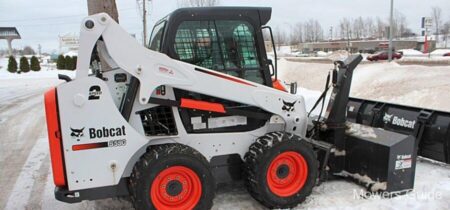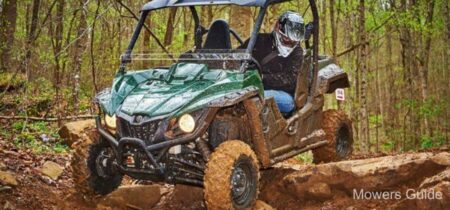If you’ve just bought your shiny new Argo ATV off-road vehicle and can’t wait to hit the trails for an adventure, be aware that you may encounter some common Argo ATV problems that could derail your off-roading plans if you’re not prepared.
As an avid Argo ATV owner, you want to familiarize yourself with the potential issues these rugged vehicles can face so you know how to handle them.
We’re going to walk through nine of the most common Argo Atv problems, from engine troubles to electrical gremlins to suspension woes, and show you how to get back on the road as quickly as possible. By being proactive and learning how to troubleshoot these common problems, you’ll be ready for anything the trails throw at you.
Argo ATV Problems And Solutions
Argo ATVs, known for their amphibious capabilities and rugged design, occasionally face operational challenges. Understanding common problems and their solutions can significantly enhance the user experience and extend the vehicle’s lifespan. Proper maintenance and timely troubleshooting are key to ensuring optimal performance on both land and water.
1. ATV Engine Not Starting
If your Argo won’t start, don’t panic. There are a few common reasons this happens, and many are easy to fix yourself.
Battery Issues
The battery could be dead or not holding a charge. Try jumping on it to test the battery. If it starts, it’s probably time for a replacement.
Faulty Solenoid or Starter
The solenoid sends power to the starter, which turns the engine over. If you hear clicking but the engine won’t turn over, the solenoid or starter may need replacement. Call a mechanic to test and replace it if needed.
Out of Gas
Check your fuel gauge or fuel petcock to ensure you have enough gas. If empty, fill the tank and try starting again.
Flooded Engine
If the engine is flooded, it has too much fuel and not enough air. Wait 10 minutes, then try starting with the throttle fully open. This allows more air to enter to combust the excess fuel.
Loose or Dirty Battery Cables
Battery cables connect the battery to the ATV. If they are loose or corroded, they can’t provide enough power to start the engine. Tighten, clean, or replace damaged cables.
With some troubleshooting, you’ll be back on the trails in no time. But for anything complex, don’t hesitate to call a certified mechanic. Your safety depends on having a well-maintained machine.
2. Loss of power
If your Argo suddenly seems underpowered, it’s usually an easy fix. Check out these common issues first:
Fuel Issues
Make sure you have enough gas; the fuel gauge isn’t always accurate! If the tank is full but the engine is sputtering or won’t start, the fuel filter or pump may need replacing. Clogged filters prevent gas from flowing properly while failing pumps can’t deliver it to the engine. gauge
Spark Plug Problems
Faulty spark plugs have trouble igniting the fuel-air mixture, robbing your engine of power. Remove the plugs and check for dirt buildup or corrosion. Clean or replace as needed.
Air Intake Blockage
Anything blocking the air intake, like leaves or debris, restricts the airflow gauge and reduces engine power. Clear out the intake to restore performance.
Throttle Issues
A stuck or malfunctioning throttle prevents the engine from reaching optimal RPMs. Have the throttle inspected and serviced by a mechanic.
Sensor Failure
Sensors monitor things like temperature, oxygen levels, and throttle position. Defective sensors can’t properly adjust engine parameters, causing a loss of power. Diagnose and replace any faulty sensors.
With some troubleshooting, you’ll get your Argo back to full power and ready for the trails again in no time. Stay safe out there!
3. Overheating Issues
One of the most common problems with Argos is overheating. There are a few things you can check to diagnose and fix overheating issues:
- Perform regular maintenance, like replacing dirty air filters, to allow for proper airflow. Clogged filters prevent heat from escaping and cause the engine to overwork.
- Check your coolant levels and fill them if they are low. The coolant system prevents overheating by circulating water through the engine. Low or empty coolant reservoirs can’t properly cool the engine.
- Inspect thermostats and water pumps for damage or leaks. Faulty thermostats won’t open to allow coolant flow, and water pumps will circulate the coolant. If either part is malfunctioning, it leads to overheating.
- Clear any debris from radiators, fans, vents, and grills. Built-up dirt and grime act as insulators and prevent heat from escaping.
- Check fan belts and hoses for wear or damage. Loose, worn, or broken belts and hoses can’t properly circulate coolant, allowing heat to build up.
- Consider an aftermarket temperature gauge to monitor engine heat in real-time. Factory gauges only indicate overheating once it’s too late. An aftermarket gauge provides an early warning to avoid damage.
If overheating continues after checking these items, have your Argos serviced by a certified mechanic as soon as possible to diagnose and repair the issue before permanent damage occurs. It’s not worth risking your engine to save a few dollars on a service call.
4. Electrical Problems
Electrical issues can be frustrating to deal with, but many common Argo ATV electrical problems are straightforward to diagnose and repair yourself.
Blown Fuse
If your Argo suddenly loses power, the first thing to check is the fuse box. Locate it—typically under the seat or hood—and inspect the fuses for any that are burned out or broken. Replace any blown fuses with new ones with the proper amperage. This should get you back up and running.
Faulty Ignition
If your Argo won’t start at all, it could indicate a problem with the ignition system, like a bad ignition coil, spark plug, or spark plug wire. Remove the spark plug to check for any cracks or corrosion. Replace as needed. Check that all spark plug wires are securely connected and in good condition. If issues continue, the ignition coil may need replacement by a mechanic.
Draining Battery
If your Argo’s battery keeps losing charge, it’s likely the alternator that’s malfunctioning and not properly recharging the battery. Have the alternator tested—if it’s bad, replacement should solve the battery drain problem. You should also check battery cable connections to ensure they’re clean and tight. A draining battery can sometimes simply indicate it’s time for a replacement.
Faulty Starter
If you hear a clicking sound when you turn the ignition but the engine won’t crank over, the starter motor is probably bad. Starters can wear out over time and will need replacements. Have the starter tested or replaced by a certified mechanic to get your Argo started again.
Following these troubleshooting steps should help you get your Argo ATV back on the trails in no time. But for any complex electrical issue, it’s best to have it checked by a professional to properly diagnose and repair the problem.
5. Steering and Suspension Problems
Steering and suspension issues can ruin your day on the trails. Here are a few common problems to watch out for with your Argo.
Loose or Broken Tie Rods
The tie rods connect your steering rack to the wheels, controlling how much the wheels turn. If the tie rods become loose or break, your Argo will wander or pull to one side. You’ll notice excess play in the steering wheel or the wheels pointing in different directions. Replace the tie rods to get the steering back under control.
Worn Ball Joints
The ball joints allow your wheels to pivot as they travel over uneven terrain. When they start to wear out, you’ll feel looseness, clunking noises, and vibrations through the steering column. Get the ball joints replaced before they fail.
Sagging or Leaking Shocks
Shocks absorb impacts from bumps to provide a smooth ride. If your Argo is bouncing excessively over small bumps, the shocks have likely lost their damping ability. Leaking shocks also need to be replaced. New shocks will make handling and braking feel like new again.
Bent or Broken Axes
The axles transfer power from the engine to the wheels. Impact damage or overloading can bend or break the axles, making the Argo unsafe to drive. You may notice the wheels wobbling or pulling to one side. Have the axles inspected and replaced by a dealer to get back on the trails?
Staying on top of potential steering and suspension problems will help keep your Argo running safely for miles of enjoyment. Regular inspections, maintenance, and necessary repairs or replacements of components like tie rods, ball joints, shocks, and axles will have you tackling the trails with confidence.
6. Excessive Smoking
Your Argo ATV might also smoke excessively. Several factors, some of which are listed below, contribute to this issue.
- There could be damage to the piston rings.
- Your ATV may contain bad oil.
- It’s possible that the spark plug is damaged.
- Fuel quality can suffer.
- You might have filled the tank with premium fuel.
Solution
You might attempt any of the following techniques to fix your Argo ATV if you notice that it is smoking excessively:
- The condition of the piston rings should be checked, and if they are worn out or broken, they should be replaced.
- Verify the quality of the oil you put in your engine. If the oil is poor quality, drain it out and add the proper oil in its place.
- You must swap out the spark plug with a new one if it is damaged.
- Verify the quality of the fuel you put in the tank. Drain it and use high-quality fuel in its place if it has been affected.
7. Not Getting Fuel
If your Argo isn’t getting fuel, the problem could lie in a few areas. Check out these common culprits:
Fuel Pump
The fuel pump delivers fuel from the tank to the engine. If it’s malfunctioning or failing, your Argo won’t start or will sputter and stall. You may hear a whining noise from the fuel tank area. Replace the fuel pump to get back on the trails.
Fuel Filter
A clogged fuel filter prevents fuel from flowing properly to the engine. Replace the fuel filter—it’s an easy fix that will have you up and running again in no time. Be sure to note the filter size and rating to get the right replacement part.
Vacuum Line
Damaged or disconnected vacuum lines can disrupt fuel delivery. Inspect all vacuum lines for cracks, holes, or loose connections, and repair or replace them as needed. Securely reattach any lines that have come loose.
Carburetor
If your Argo has a carburetor, it may need adjustment or repair. Take it to a certified mechanic to have the carburetor serviced and properly tuned. A well-maintained carburetor is essential for efficient fuel flow to the engine.
Fuel Contamination
Dirty or contaminated fuel will clog up the fuel system, preventing your Argo from starting. Drain the entire fuel system, including the tank, then refill with fresh, clean fuel. Add a fuel stabilizer to prevent contamination in the future. This should get your Argo back up and running, ready to power over hills and streams.
8. Clogged Air Filter
The air filter in your Argo Atv prevents dirt and debris from entering the engine. If it gets clogged, it reduces airflow and performance.
Check the Air Filter
If your Argo seems underpowered or isn’t accelerating well, the air filter is a good place to start. Locate the air filter housing; it’s usually a rectangular box with clips or bolts on one side. Unfasten the clips or undo the bolts to open the housing. Pull out the air filter; it will likely be a foam or paper filter element. Examine the filter for dirt or damage. If the filter looks dirty or torn, it’s time to replace it.
You can find replacement Argo air filters online or at an auto parts store. Make sure to get the correct part number for your specific Argo model. When installing the new filter, place it in the housing with the airflow arrow pointing in the direction of the engine. Secure the housing cover back on, ensuring all clips or bolts are fastened.
A clean, properly installed air filter is essential for optimal performance and engine health in your Argo. Be sure to inspect and, if needed, replace the air filter every 50–100 hours of riding or once a year. Preventing small problems like a clogged air filter can help keep you out on the trails rather than stuck in the garage doing repairs.
9. Oil Leakage
Oil leakage is one of the most common issues with Argos. There are a few possible causes for oil leaks:
- Worn or damaged seals and gaskets: The seals and gaskets in an Argo, especially the main seal, can wear out or become damaged over time, allowing oil to seep through. You’ll need to replace the leaky seals and gaskets.
- Cracked or warped cases: The cases that contain the engine and transmission can sometimes crack or warp, creating small openings for oil to leak through. Unfortunately, this usually requires replacing the damaged cases.
- Overfilled oil: Too much oil in the engine can build up pressure and force its way past seals and gaskets. Check your Argo’s oil level and drain any excess oil.
- Improperly installed components: If any components like the oil filter, drain plug, or oil pan aren’t installed properly, it can cause oil to leak. Double-check that all components are securely and correctly installed.
To fix an oil leak in an Argo, first, get the steering to thoroughly clean the area of the leak so you can pinpoint its source. Then, determine if the leak is coming from a seal or gasket, the cases, overfilling, or installation issues.
Make any necessary repairs or replacements to resolve the leak. Be sure to also check your Argo’s oil level regularly and address any leaks promptly to avoid engine damage or performance issues. Keeping your Argo well-maintained is the best way to prevent problems like oil leaks and keep enjoying the trails.
Conclusion
Let’s conclude with the top nine common problems that can plague Argo ATV owners and riders. But don’t let some minor trouble stop you from getting out there and enjoying your machine. With some basic mechanical know-how, the right tools on hand, and a little patience, you can diagnose and fix most of these issues yourself.
And for the more complex problems, don’t hesitate to take them into the shop. The pros have the experience and equipment to get you back up and running in no time. Your Argo was built for adventure, so grab your gear, call up your friends, and hit those trails.
FAQs
Who is the inventor of the Argo ATV?
ODG started producing gearboxes for an ATV called the Amphicat and continues to be an expert in this field. Soon after, in 1967, ODG decided to launch its 6-wheel amphibious car, the Argo.
How dependable are ARGO ATVs?
The reliability of Argo engines means that they don’t require frequent repairs. Bring your Argo engine in if something does happen, and a specialist will handle the situation. Highly qualified and licensed mechanics can service your car.
Is Argos challenging to maintain?
Although maintenance is not difficult, it must be done in addition to cleaning. Despite being a grease trap, they benefit greatly from routine cleaning.
Can Argo ATVs manage different types of terrain?
Mud, snow, rocks, and steep inclines are just a few of the terrains that Argo ATVs can manage. They can also navigate over small bodies of water.
How fast can Argos travel?
The highest speed for 8×8 models fluctuates between 18 and 20 mph depending on load and terrain, while the top speed for 6×6 versions is between 20 and 23 mph. High speed is not a problem in the terrain that the ARGO XPlorer is designed for.
For more outdoor vehicle problems solution visit here and for more guides related to mowers visit Mowers Guide











